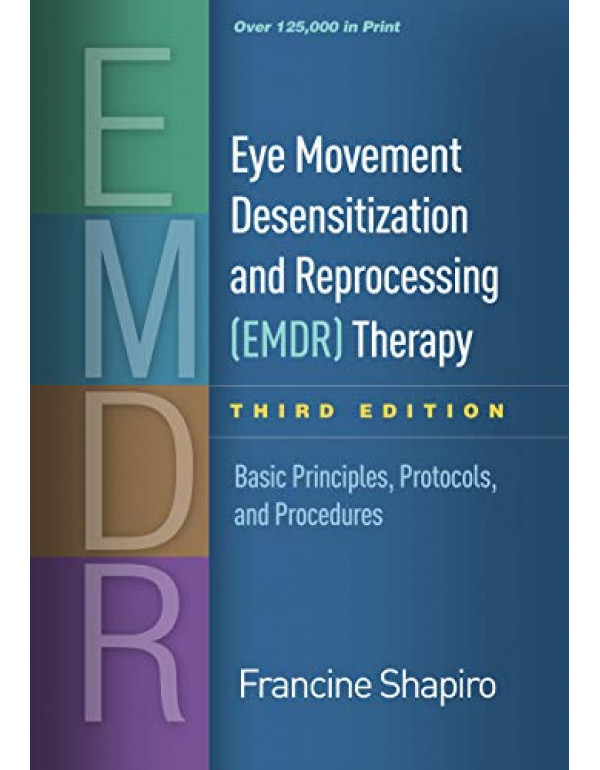Tags: Eye Movement Desensitization and Reprocessing (EMDR) Therapy by Francine Shapiro 3rd Edition {9781462532766} {1462532764}
Eye Movement Desensitization And Reprocessing (EMDR) Therapy *HARDCOVER* By Francine Shapiro 3rd Edition {9781462532766} {1462532764}
- Type: Hardcover Book.
- Publisher: The Guilford Press; Third edition
The authoritative presentation of Eye Movement Desensitization and Reprocessing (EMDR) therapy, this groundbreaking book--now revised and expanded--has enhanced the clinical repertoires of more than 125,000 readers and has been translated into 10 languages. Originally developed for treatment of posttraumatic stress disorder (PTSD), this evidence-based approach is now also used to treat adults and children with complex trauma, anxiety disorders, depression, addictive behavior problems, and other clinical problems. EMDR originator Francine Shapiro reviews the therapy's theoretical and empirical underpinnings, details the eight phases of treatment, and provides training materials and resources. Vivid vignettes, transcripts, and reproducible forms are included. Purchasers get access to a Web page where they can download and print the reproducible materials in a convenient 8 1/2" x 11" size.
New to This Edition
*Over 15 years of important advances in therapy and research, including findings from clinical and neurophysiological studies.
*New and revised protocols and procedures.
*Discusses
additional applications, including the treatment of complex trauma,
addictions, pain, depression, and moral injury, as well as post-disaster
response.
*Appendices with session transcripts, clinical aids, and tools for assessing treatment fidelity and outcomes.
EMDR therapy is recognized as a best practice for the treatment of PTSD by the U.S. Departments of Veterans Affairs and Defense, the International Society for Traumatic Stress Studies, the World Health Organization, the U.K. National Institute for Health and Care Excellence (NICE), the Australian National Health and Medical Research Council, the Association of the Scientific Medical Societies in Germany, and other health care associations/institutes around the world.
Table of Contents
1. Background
2. Adaptive Information Processing: The Model as a Working Hypothesis
3. Components of EMDR Therapy and Basic Treatment Effects
4. Phase One: Client History
5. Phases Two and Three: Preparation and Assessment
6. Phases Four to Seven: Desensitization, Installation, Body Scan, and Closure
7. Working with Abreaction and Blocks
8. Phase Eight: Reevaluation and Use of the EMDR Therapy Standard Three-Pronged Protocol
9. Standardized Protocols and Procedures for Special Situations
10. The Cognitive Interweave: A Proactive Strategy for Working with Challenging Clients
11. Selected Populations
12. Theory, Research, and Clinical Implications
References
Appendix A. Clinical Aids
Appendix B. Client Transcripts
Appendix C. Clinical and Outcome Assessments
Appendix D. Research Lists
Appendix E. Client Safety
Appendix F. EMDR Therapy Training Resources
Index

